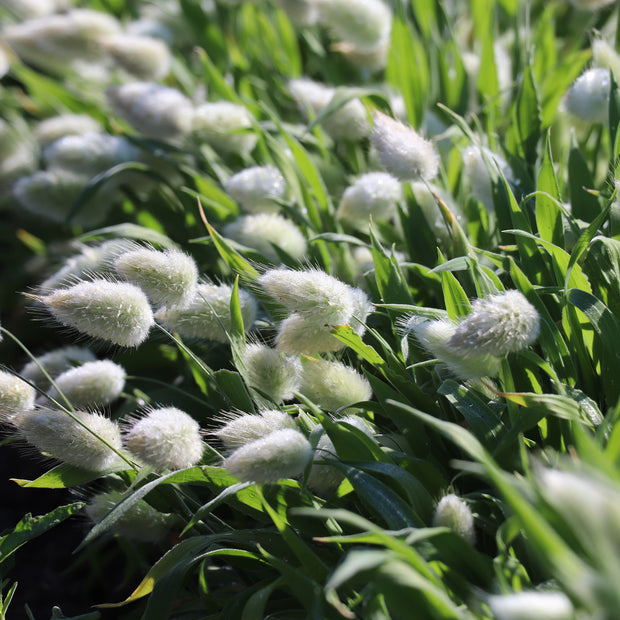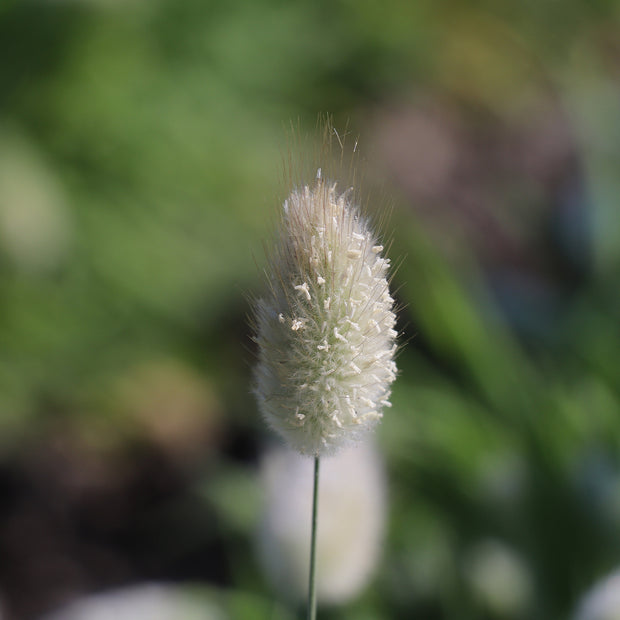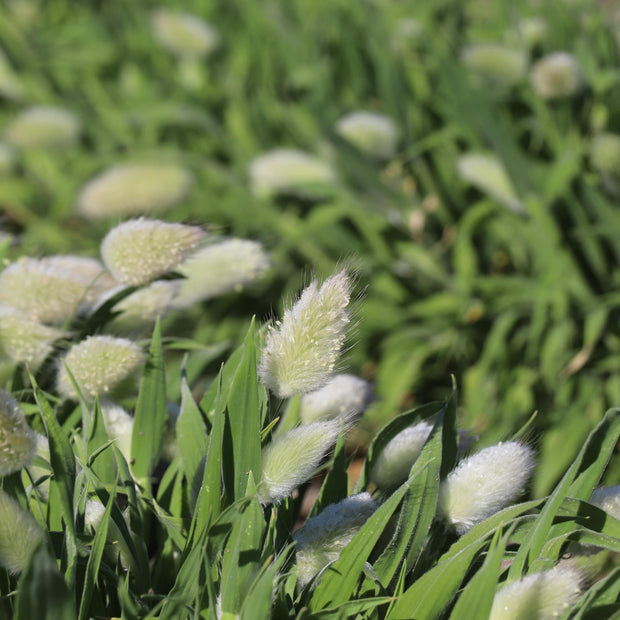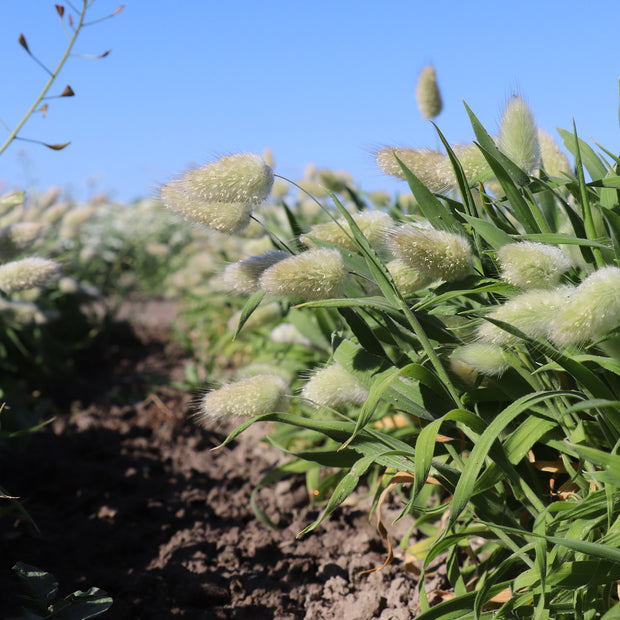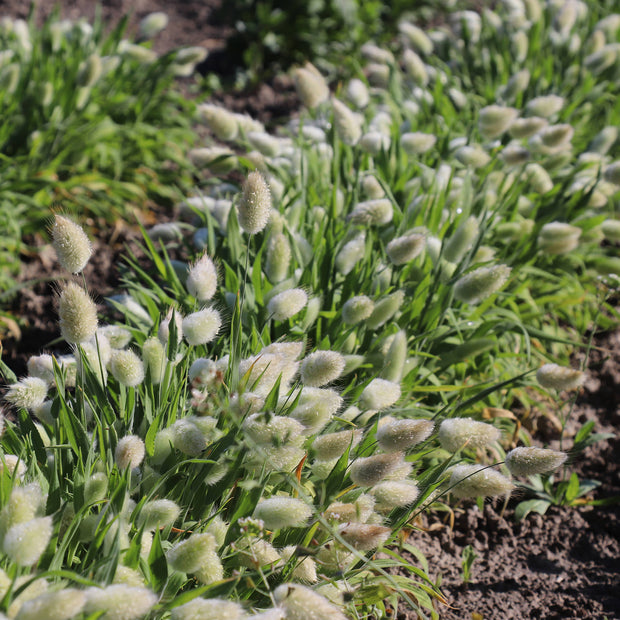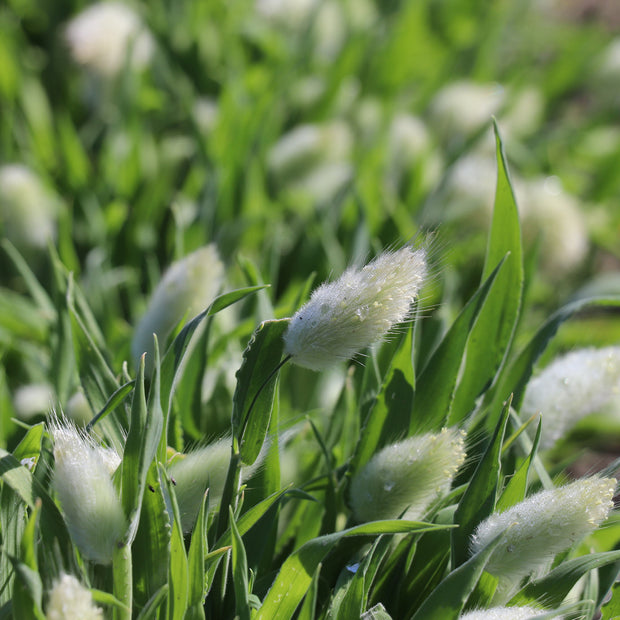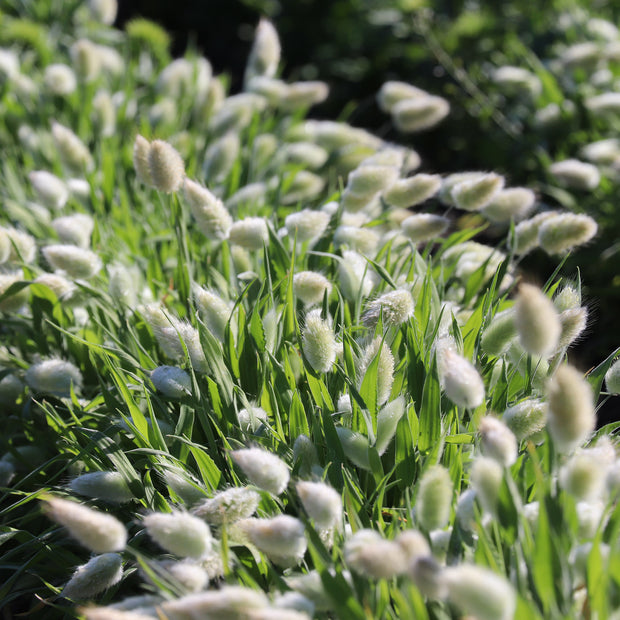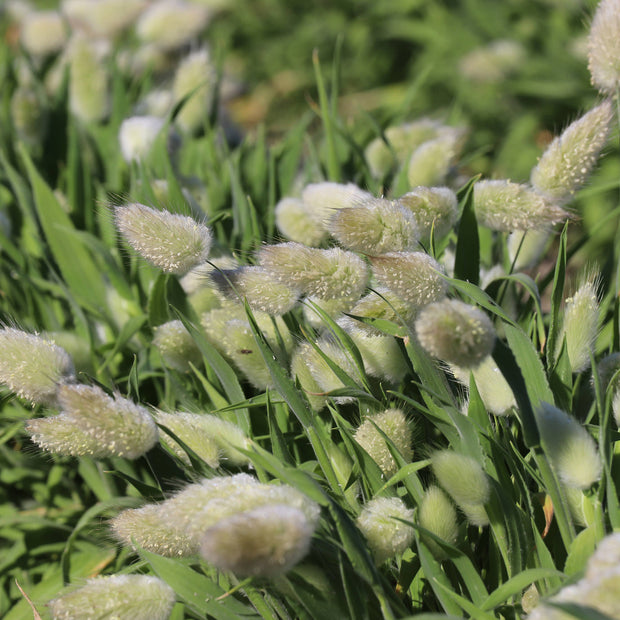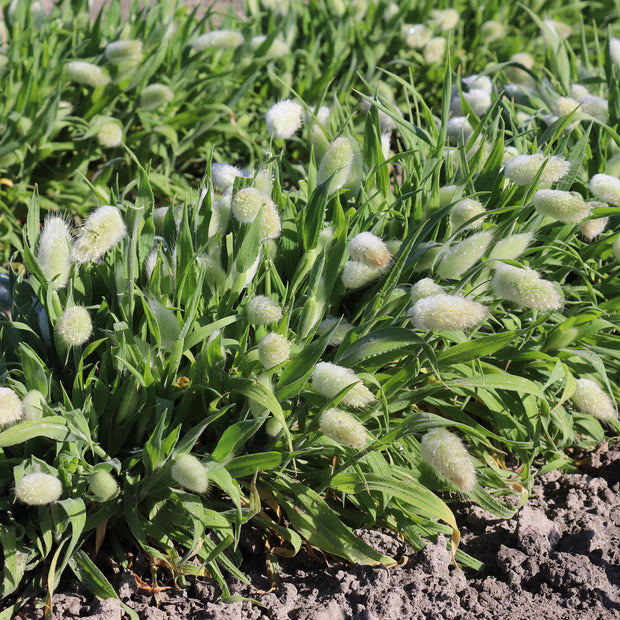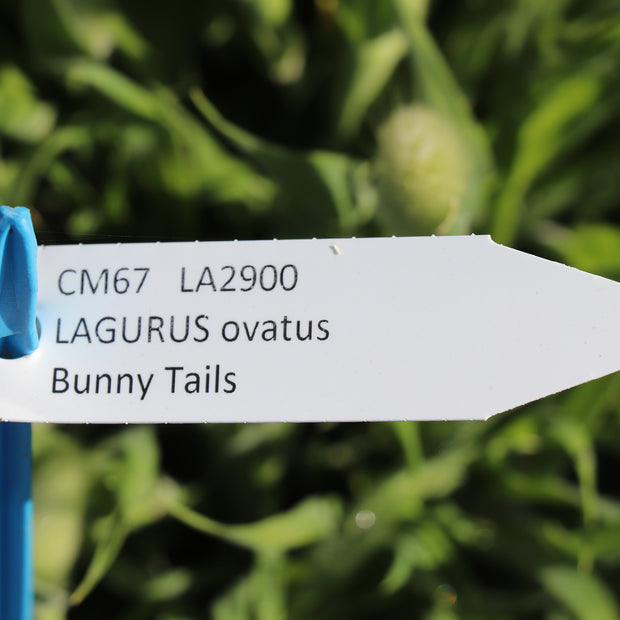Bunny Tails
As low as €11,20 per package
- Soft, fluffy, and absolutely irresistible to touch
- Nice edging for a pathway
- Top Quality Bunny Tails Seeds shipping now!
PRODUCT DESCRIPTION
The botanical name for Bunny Tails is "Lagurus ovatus". They are also known as Bunny Tails, Hares' Tails, and Catgrass. This exceptional annual grass has panicles (flowers) like little powder puffs. Native to the Mediterranean region, it grows well in any temperate environment, and puts on a great show mid-summer in containers, garden beds, or xeriscaping landscapes. Better still, the amusing flower heads dry on the plant and remain in place through the winter. The stems grow to 30cm (12") tall, and add whimsy to flower arrangements. They're also superb as dried flowers. Bunny Tails has earned the RHS Award of Garden Merit for its adaptability and charm. Fun to grow and easy peasy, kids will love it!
Order your top quality Bunny Tail Seeds with Fontana Seeds Today!
Sowing advice Bunny Tails
BUNNY TAILS IN THE GARDEN
Though bunny tails—unlike most ornamental grasses—are annuals and require replanting each year, their fairly rapid growth and diminutive size allow you to grow a tidy, compact mound each season.
Add them to your xeriscaping scheme, or along walkways where you can reach down and touch the soft, velvety leaves and silky-soft, fluffy heads. Watch the panicles turn from spring green to tan, matched in pace and color by the foliage. There's something comforting about the perseverance of bunny ears’ "flowers" sticking around when everything else is closing up shop for the season.
You'll want to grow them in small clusters for the best "clumping" effect, given that each seed produces only a few leaves and heads.
Sunlight Requirements: Full sun; bunny tails thrive in heat and sunshine. Mature plants, particularly those kept in containers, will tolerate light or afternoon shade.
Soil Preferences: Lagurus ovatus seems to prefer soil on the sandy side, but any well-draining substrate will do).
pH: Neutral (6.5 to 7.5)
Watering Requirements: Moderate to light. Bunny tails are drought-resistant. Allow the soil around them to dry in between watering once they've passed the seedling stage.
Flowers: The "tails" are actually clusters of tiny flowers called panicles growing up to 6cm (2.5") long. They're a pale green, maturing into glowing white before gaining a creamy beige tint at the end of the growth cycle. Bunny tails, as their name implies, are oval in shape but often somewhat tapered.
Foliage: Long, narrow, pointed leaves are gray-green and velvety, and are more supple than leaves belonging to many other ornamental grasses.
Bloom Period: Late spring through midsummer; after the panicles go to seed, they tend to become ragged by the wind.
Pests & Diseases: Bunny tails aren't particularly prone to pests or diseases.
Maintenance: Bunny tails is low-maintenance. Deadhead panicles before the seeds begin to loosen to prevent naturalization and remove faded plants after the first fall frost so you can start anew in spring.
Harvesting: Snip entire stems, at any stage of maturity, for floral displays or crafts. Hang them, inverted, to dry in a well-ventilated area.
GROWING BUNNY TAILS FROM SEEDS
As we mentioned above, we recommend planting about a dozen seeds (give or take) in each planting location or 10 x 10cm (4" by 4") plastic seedling pot. You can grow them in smaller cell-type trays (with fewer seeds per cell, of course) and combine the plants from each cell into a singular area, but overcrowding seeds will reduce germination rates and seedling vigor.
At Fontana Seeds we recommend leaving a portion of the collar above ground. This will help keep the seeds from straying from their spot in wet weather. As the seedlings grow, you can remove the collars. Since bunny tails reproduce from seed, the collars won't prevent them from running, but they do help contain plants that rapidly reproduce through rhizomes.
Direct Sow: Plant your bunny tails seeds after all danger of frost has passed, and the soil temperature has reached 70°F.
Start Indoors: Plant seeds in a well-drained substrate 4-6 weeks before your area's last frost date. Make sure you use a fluorescent grow light above your seedlings or put them in a bright window; bunny tails need lots of light to get going.
Seed Depth: 0.5cm (1/4")
Seed/Plant Spacing: Plant clusters of seeds (or emergent seedlings) 25-30cm (10" to 12") apart.
Germination: 21 to 25 days
Protect your bunny tail seeds from heavy spring rains or overzealous hose spraying until the plants are well-established. Once your indoor starts have come up and shed their husks, and the soil has warmed, you can transplant them outdoors.
Fast Facts
- Article number:
- S06260-11
- Botanical Name:
- Lagurus ovatus
- Common Name:
- Bunny Tails, Hares' Tails, and Catgrass
- Days to germinate:
- 21-25 days
- Days to maturity:
- 16 weeks
- Flowering time:
- Late Spring - Late Summer
- Hardiness and Longevity:
- Annual
- Height:
- 30cm - 50cm (12 to 20 inches)
- Ideal For:
- Containers, garden beds or xeriscaping landscapes
- Spread:
- Up To 25cm - 30cm (10 to 12 inches)
- Sunlight:
- Full sun to partial shade
